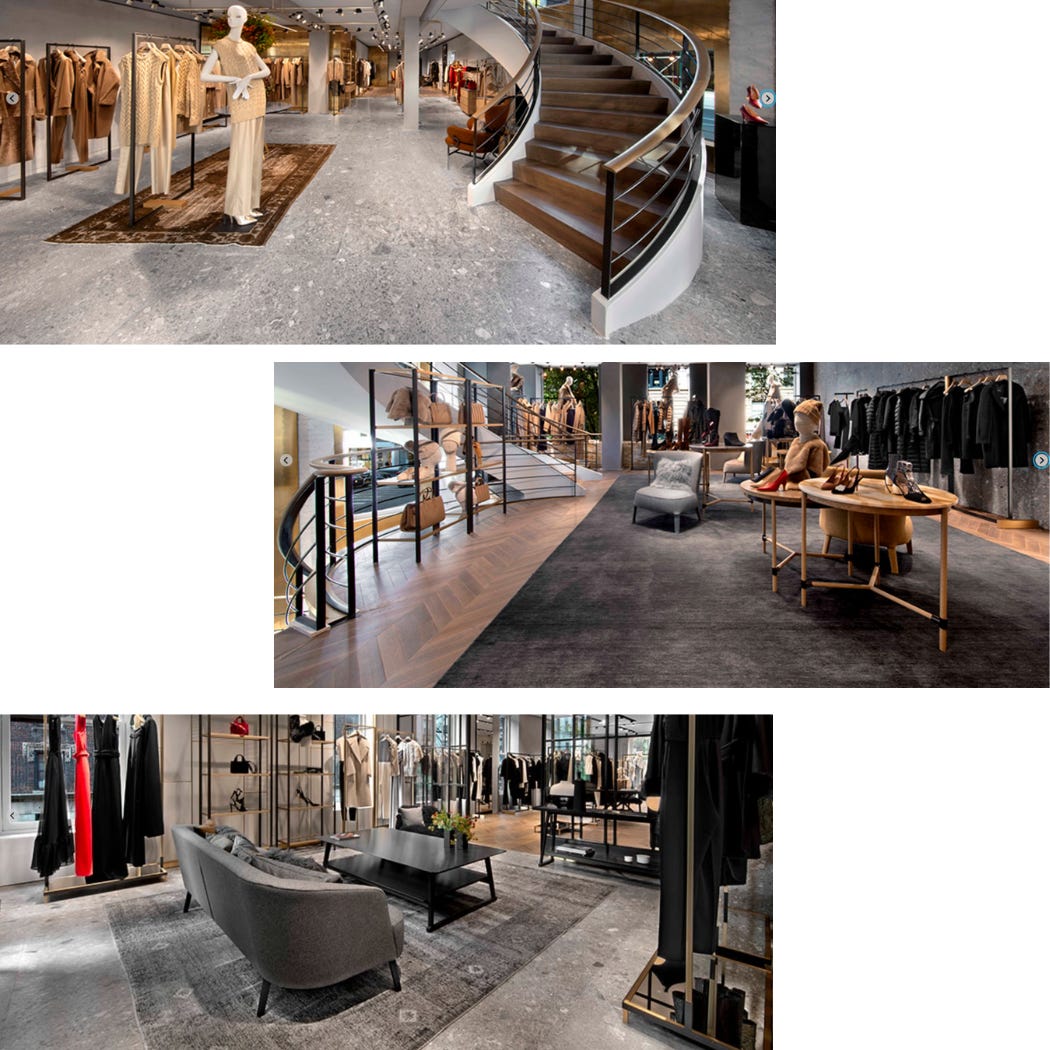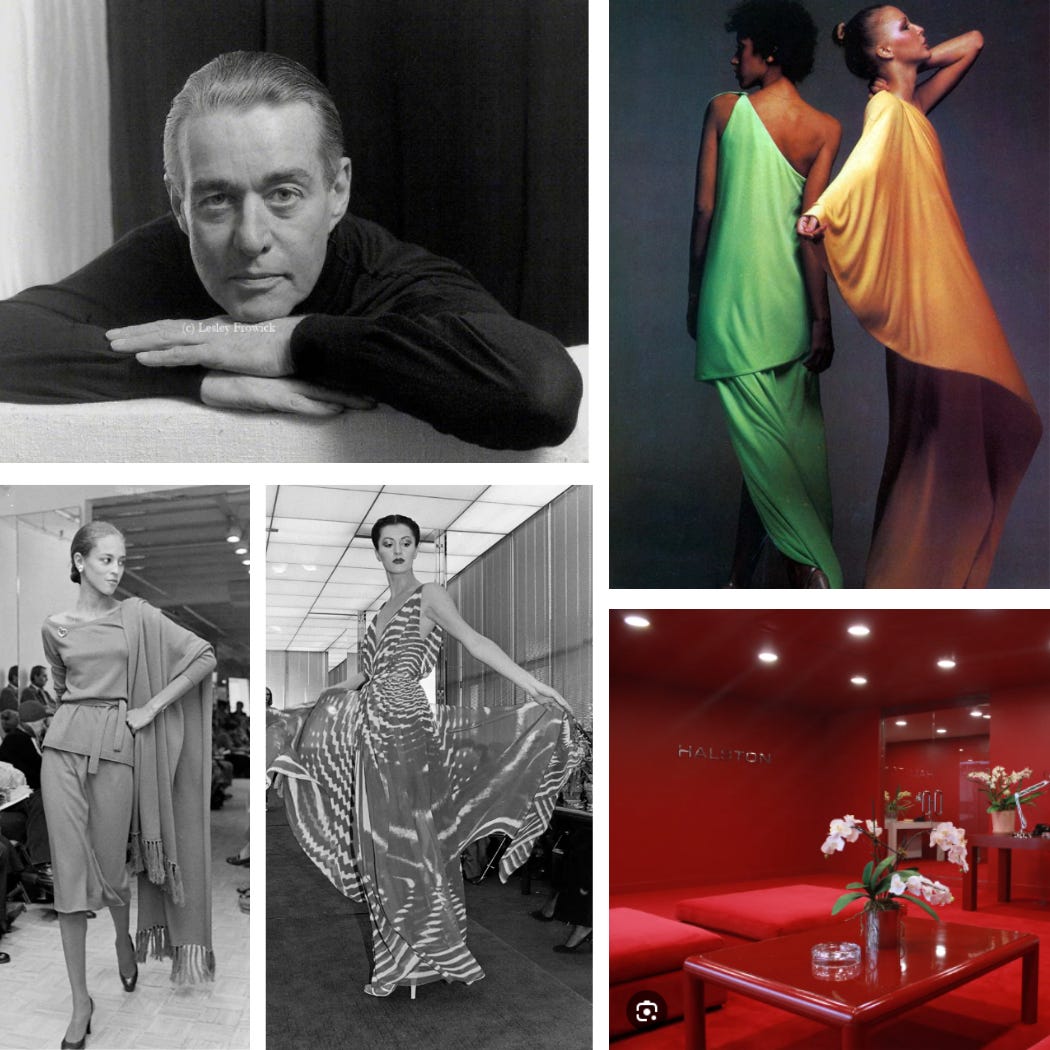SS-30: 813 Madison Avenue: When Fashion Meets Legacy
In an age where online shopping has become the norm, it's easy to overlook the richness and magic of an in-person shopping experience.
I get it—shopping from your couch with just a few clicks is convenient. But there is something truly irreplaceable about stepping into a beautifully curated space. It’s not just about finding an item of clothing; it’s about the entire experience. You’re engaging with these "creatures" I call clothes—seeing, touching, and feeling them in a space designed to elevate the act of choosing what you wear.
Everything from how the clothes are displayed, the type of hangers used, the lighting, the decor, the music playing, and the energy and attention of the staff becomes part of the story the store is telling.
Take, for example, the experience I’m highlighting today.
Last week, while shopping in New York, I was on the hunt for a winter coat that had to be both stylish and unique for my client. Quality, of course, was non-negotiable. That’s when I stepped into Max Mara at 813 Madison Avenue.
Immediately, I could sense that this wasn’t just any store—it was something special. Curious, I began to ask about the building’s history, and what I discovered was a fascinating legacy tied deeply to the fashion and textile world.
The story of 813 Madison Avenue is intertwined with the legacy of the Ladew family.
It all began in 1826 when Harvey Smith Ladew learned the tanning trade from his father, setting the stage for a family business that would thrive for generations. After marrying Rebecca Krom in 1849, the Ladews moved to New York City in 1866, where Harvey’s reputation for quality and innovation in the leather industry grew.
This legacy would later influence the path of his son, Edward R. Ladew, born in 1855. Following his father’s footsteps, Edward became a pivotal figure in the leather industry, continuing the tradition of excellence that the Ladew family was known for.
Ambitious and visionary, Edward partnered with Daniel S. Fayerweather to form Fayerweather & Ladew, a firm that became one of the most influential in the U.S. leather industry. As their business prospered, New York’s Upper East Side saw new architectural developments, including elegant rowhouses by Charles Buek.
In 1881, Charles Buek of Charles Buek & Co. began constructing six high-end rowhouses between 68th and 69th Street, along with two additional homes at 813 and 815 Madison Avenue. Before the project was completed, Harvey S. Ladew purchased the grand corner mansion at 813 Madison Avenue, a four-story neo-Grec building clad in red brick and trimmed in brownstone.
The composition reflected the acute angles and incised carved decoration typical of the 1880s. By the time the family moved in, in 1882, the children were young adults and it quickly became a hub of social and business influence.
Though Edward passed away in 1888, his legacy endured through his sons, Edward and Joseph who expanded the family business, to even greater heights, including founding the United States Leather Company.
By 1917, the Ladews added a penthouse to the mansion, continuing to invest in their iconic home. As the 20th century progressed, the neighborhood and the mansion itself evolved.
By the 1920s, Madison Avenue began transitioning from a residential area to a more commercial one with medical offices and luxury retail spaces. The Ladew family leased the mansion for medical offices in 1921, marking the end of its time as a private residence.
Throughout the years, the building adapted, reflecting the changing face of Madison Avenue.
By the 1960s, the ground floor housed designer Veneziano’s showroom, and in 1971, the building underwent another transformation when Halston, one of the most iconic fashion designers of the time, opened his showroom. With its sleek design, mirrored walls, and glamorous clientele, the space brought a new wave of sophistication to the building. New York Magazine described it as “ivory walls and cushions, carpet the color of wet sand, and mirrored walls,” reflecting Halston’s chic, minimalist style.
After Halston’s passing in 1990, the building changed hands again, becoming the New York flagship for Max Mara, the luxury Italian fashion brand.
In 1994, the building underwent a significant renovation, blending contemporary updates with restored historical elements, including a limestone storefront designed by architect Frederic Zonsius.
Today, Max Mara’s flagship store stands as a symbol of the building’s rich history. A fusion of Italian craftsmanship and New York elegance, the boutique offers a modern shopping experience that respects its historical legacy.
The design, by Duccio Grassi Architects, features timeless materials like Ceppo de Gré stone and Tuscan-treated brass, paying homage to the brand’s roots and the building’s past.
In a world increasingly dominated by online shopping, stepping into a space like 813 Madison Avenue reminds us of the irreplaceable joy of an in-person experience.
Every element is thoughtfully curated, offering you more than just an opportunity to buy something—it’s an invitation to connect with the essence of the brand and the history of the space.
Walking through the doors of a place like 813 Madison Avenue is stepping into a story. And that, in my opinion, is something no online shopping cart can ever replicate.








